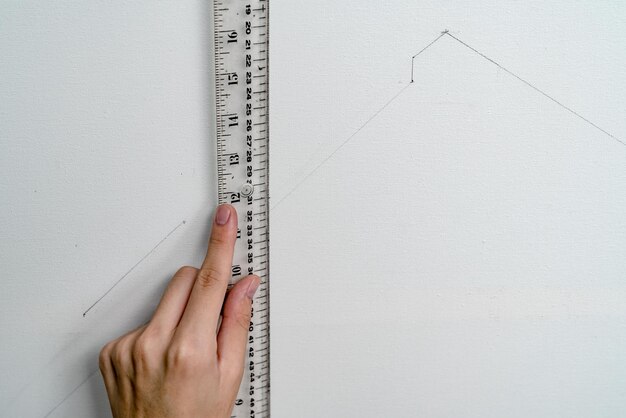Find Your Roof's Angle: Measuring Roof Pitch Made Easy
Ensuring your roof is at the right pitch isn't just about aesthetics—it's critical for proper water drainage, structural integrity, and the longevity of your home. But how do you measure your roof's pitch in the first place?
Understanding Roof Pitch
Roof pitch refers to the angle or slope of a roof, typically expressed as a ratio of the rise (vertical change) over the run (horizontal change). For example, a roof pitch of 4/12 means the roof rises 4 inches for every 12 inches it runs horizontally.
Steps To Measure Roof Pitch
Measuring your roof pitch is simpler than it seems. Here's how you can do it:
Step 1: Gather Your Tools
- 12-inch Level: This will help you ensure accuracy.
- Tape Measure: Necessary for getting precise measurements.
- Ladder: To access the roof safely; ensure it's stable and secure.
Step 2: Position Yourself Safely
Set your ladder securely against the building to reach the edge of the roof. If your roof is particularly steep or high, hiring a professional for safety is wise.
Step 3: Take the Measurements
- Place the Level: Start by placing one end of the 12-inch level flush with the roof edge.
- Leveling: Move the level until the bubble is centered.
- Measure the Rise: With the level still in position, measure vertically from the roof's surface to the bottom edge of the level directly above. This is your rise in inches.
If you find the pitch intimidating or confusing, it pays to understand where to seek help, especially if you're considering structural changes or repairs that might need funding.
Linking Roof Projects to Financial Assistance
Roof repairs can be costly. Luckily, several financial assistance programs can help alleviate these expenses:
- Government Grants and Loans: These can be accessed through specific programs designed for home improvements.
- Green Energy Incentives: If your roof project includes energy-efficient measures, you might qualify for rebates or tax credits.
- Home Equity Lines of Credit (HELOCs): A great option if you have considerable equity in your home.
- Insurance Claims: They might cover damage repairs resulting from specific events, helping reduce your out-of-pocket costs.
Seek Professional Advice
While DIY measurements are perfectly valid, when it comes to roofing, professional inspections provide peace of mind. They ensure that your results are accurate and that you become aware of any budding issues.
Engaging with roof experts often leads to insights about the home's health that Excel spreadsheets or pitch gauges can't offer.
Moving Forward: Utilize Educational and Financial Resources
Embarking on a roof project is a significant financial undertaking. You might want to explore these opportunities to better manage costs:
- 📈 Government Assistance Programs: Check eligibility for grants aimed at home repairs.
- 💳 Credit Card Offers: Low-interest or zero APR introduction rates can offer financial breathing room.
- 💡 Educational Grants: If exploring green roofing, educational resources or grants can provide both knowledge and funds.
- 🏠 Home Improvement Loans: Designed for such projects, they offer manageable interest rates and terms.
Ensuring your roof is in good shape is not only vital for your home's well-being but also a smart financial move. With the proper knowledge, tools, and potential financial assistance, tackling roofing challenges becomes a lot less daunting. Now that you're equipped with the know-how on measuring roof pitch and financing your projects, you can confidently manage your roofing endeavors!
